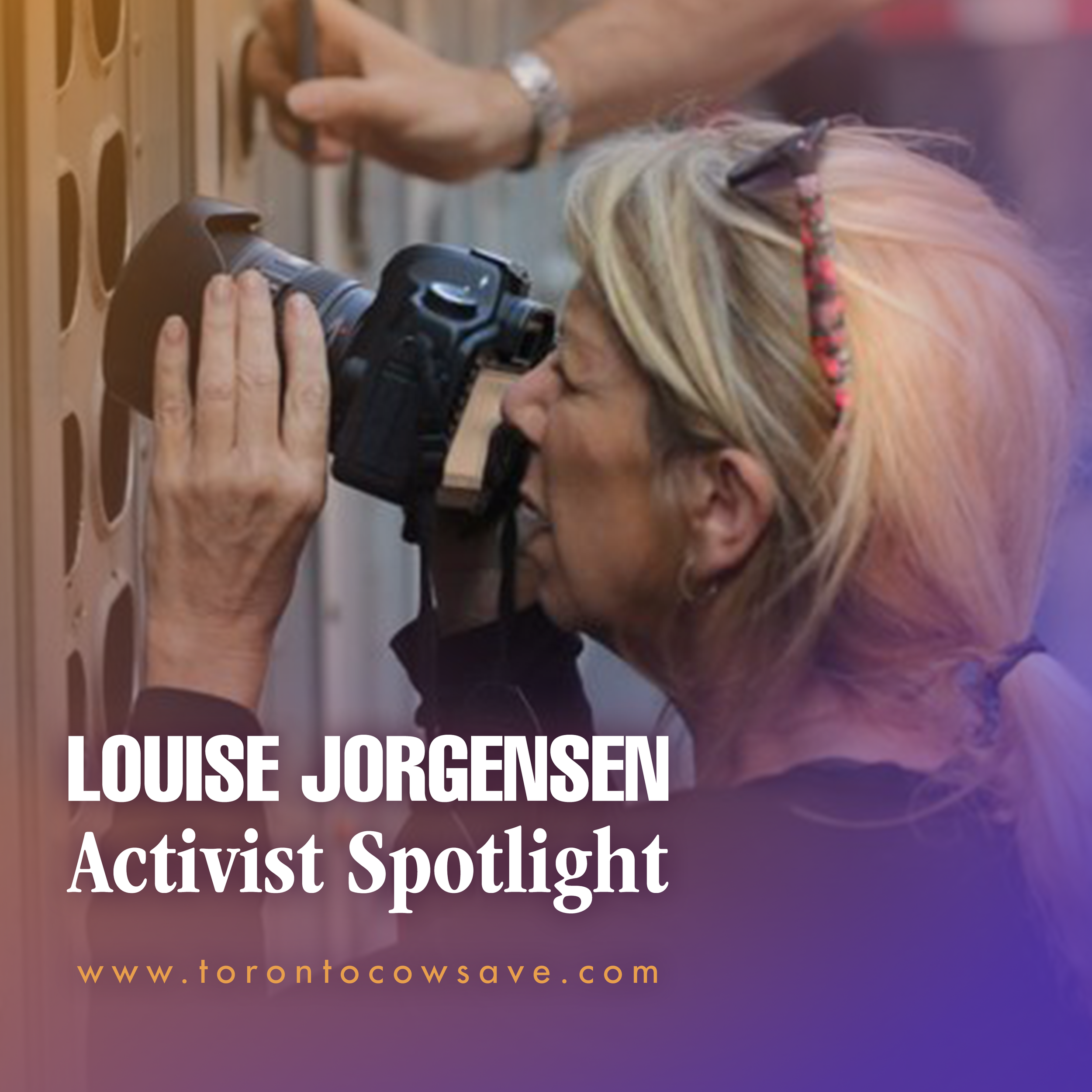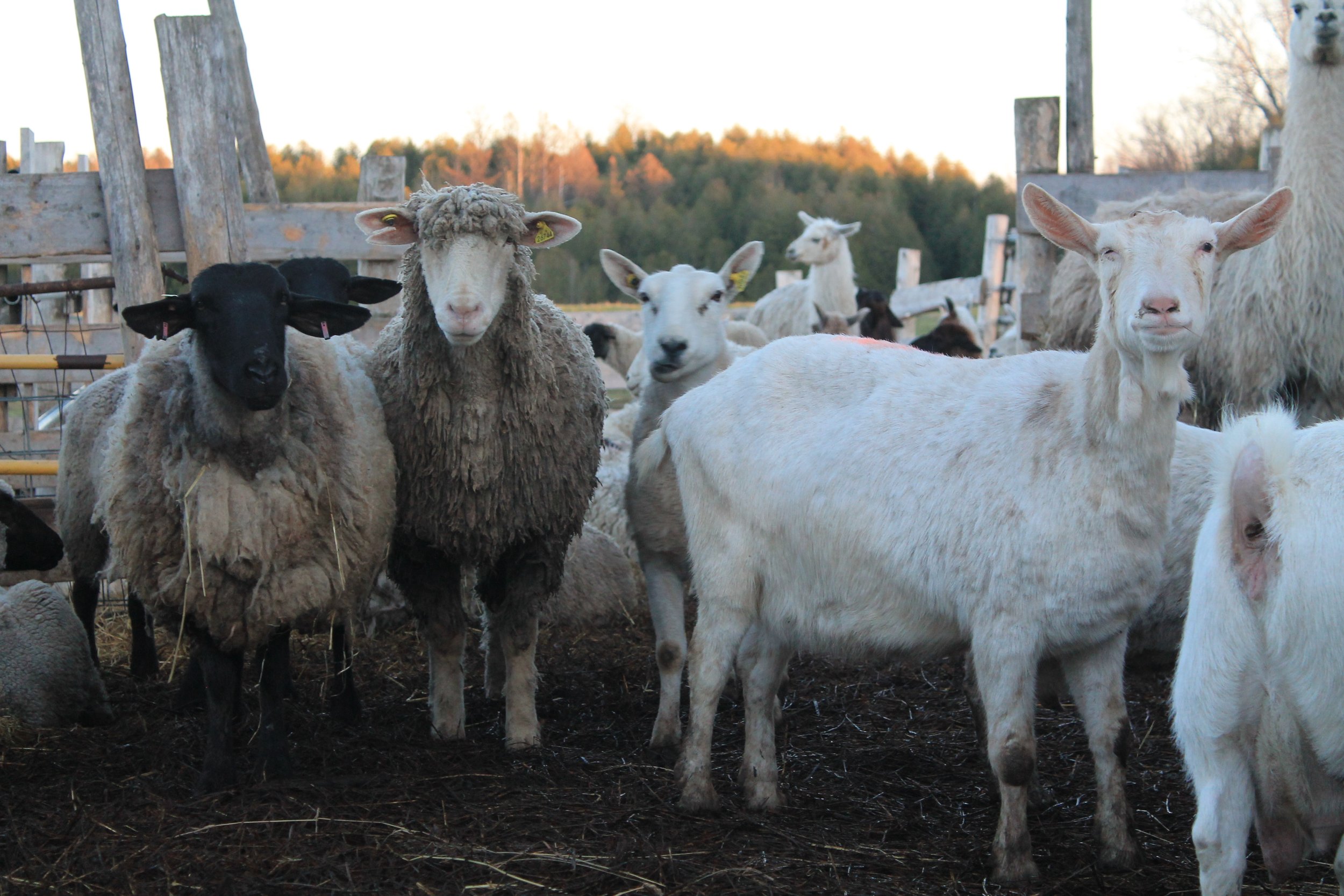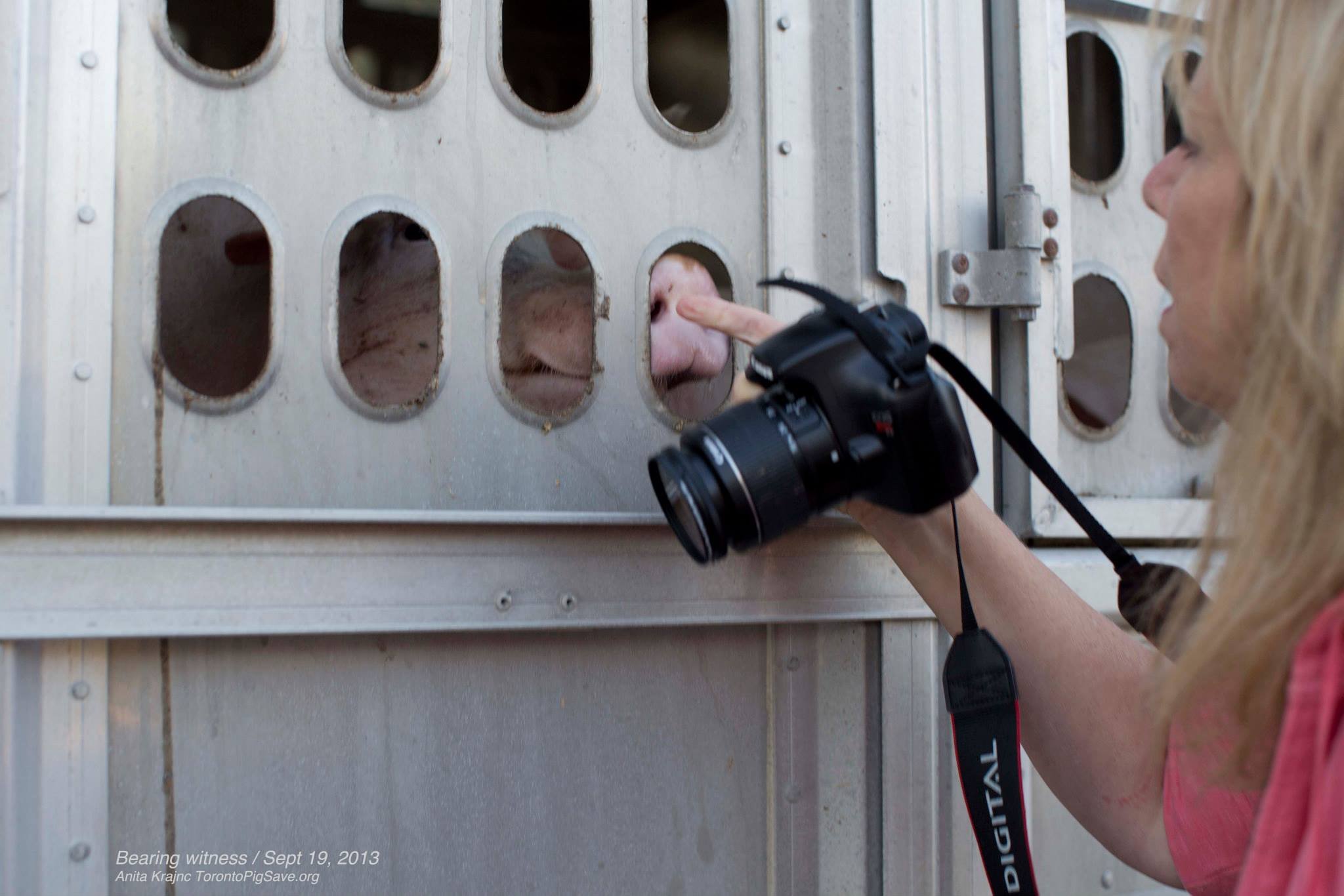Spotlight: Louise Jorgensen
From teen animal rights activist to activism with my teen son.
I’ve always had a deep connection with animals. Maybe more so than with other humans. Their intentions are always clear and pure and I know exactly where I stand with them. They don’t judge, bully, want to fool or compete. When I respect them, they give me respect. They treat everyone as equal.
During my childhood, I kept a menagerie of mice, hamsters, guinea pigs, rabbits, dogs, and cats. I would lose myself in books and films about animals, such as Charlotte’s Web, Never Cry Wolf, and Born Free. At ten years old, I held a fundraiser on my front lawn for the Toronto Humane Society.
My mother was never terribly fond of having animals in the house and didn't quite understand my connection with them, but she usually tolerated my need for their companionship. When I was twelve, my uncle purchased a cage filled with rabbits from a downtown Toronto butcher after I became inconsolable upon witnessing them. He helped me build an outdoor pen in my backyard, and we found loving homes for most of the rabbits.
12 year old me
In high school, I connected with a couple of students who were also friends to animals, and together we decided to organize an animal rights club. None of us were vegetarian or even knew that it was possible; all our lives we were taught that eating animals was necessary. We didn't have a clear goal for the club, but we knew we wanted to stop people from harming animals.
We called a Toronto cow slaughterhouse and asked if we could come to bear witness. To our surprise (and horror), they said yes. We were not permitted to film, but what I witnessed that day is forever engraved on my heart.
We called a Toronto cow slaughterhouse and asked if we could come to bear witness and, to our surprise (and horror), they said yes. We were not permitted to film but what I witnessed that day is forever engraved on my heart.
I remember a worker prodding a cow into a rusty metal box, barely larger than the cow himself. The cow looked around, eyes wide with fear. He looked right at me, then suddenly tried to leap from the box toward us, his face not far from my own. Did he understand that we cared? Animals are far more intuitive than humans.
I tried not to show my emotions, but I couldn't contain myself. I started to cry. The worker laughed as he prodded the cow back into the box and shot him with a bolt gun, the piercing sound ricocheting off the cold, concrete, blood-stained factory walls. I remember the side of the box lifting, and the stunned cow sliding down a concrete slope toward another worker waiting at the bottom. The worker looped a chain around the cow's back leg, and he was lifted, still kicking, two stories high on a conveyor that took him around a corner to be cut into pieces. My heart was pounding. I couldn't believe what I had just witnessed.
Although I knew that animals had to be killed for us to eat, like many, I didn’t know—or want to know—the details. Wasn’t eating animals necessary? My mother referred to killing and eating animals as "the necessary evil," but I questioned: is any evil necessary?
Witnessing this cow being killed cracked open a wall of social conditioning in my heart, like a dam collapsing and flooding my mind with intense emotions and questions. “How could this be happening?” and “Why is everyone okay with this?”
With this shocking experience fresh in our minds, we wrote an article and handed it out to students at our school—at least to those willing to look at it. Prior to social media, getting information to others was extremely limited and completely manual. The media was not interested in publishing animal rights articles and still, to this day, are mostly not. We didn’t have the quick and easy ways to spread information or network with other activists and organizations like we do today.
Few students showed interest in our cause, so our club eventually dissolved, and I lost contact with my friends.
Fast forward many years: now a mother, we moved from the city to a rural area near Toronto. In 2007, my son Cameron—who was 12 and mostly vegetarian all his life—and I decided to become vegan together after learning about the dairy industry. We visited animals at a small slaughterhouse near our home when no one was there, bringing them treats and letting them know we cared. I felt a strong pull to get active again to help these animals and began searching for a way.
Victims penned at a rural slaughterhouse near my home. | 2010
During that time I worked as a graphic designer and website builder so, of course, my first animal rights project was building a website to expose the truth about the dairy industry. I named the site Cruel Milk Moustache after the Milk Moustache dairy campaign that was popular at the time. Within a few weeks of launching the website, I received an email and a registered letter from the California dairy board with threats to sue if I did not take down the website. After replying that it’s not illegal to show the truth, I did take down the website. I didn’t know other activists at the time and felt quite threatened without the support that is available now.
After some research, I discovered that PETA (People for the Ethical Treatment of Animals) was holding a protest at a large Toronto pig slaughterhouse. Both Cameron and I attended the protest, where we connected with other animal activists—some of whom I still work with today.
Protest organized by Peta at Quality Meat Packers pig slaughterhouse, 2011 | Photo: Toronto Sun
At this protest, I also met Anita Krajnc, who lived nearby and wanted to start organizing protests at this slaughterhouse. The following month, I attended the inaugural Toronto Pig Save protest and continued to make the 80km journey downtown two, sometimes three times each week to help organize, create graphics and placards, photograph, and be a voice for animals once again. I was ecstatic to finally connect with more people who felt as I did.
“Pig Island” 2012 | Photo: Julie O’Neill
I've always been creative and loved photography, but I didn't have a specific focus for my work. I've since worked hard to master my photography skills so that I could more effectively bring these victims to the public eye, emphasizing their individualism so that others will also see them in a new way.
Award winning Toronto photojournalist Jo-Anne McArthur’s work has been a great inspiration to me and I am grateful to her for continually acknowledging me and encouraging me to do more.
Toronto Pig Save 2013 | Photo: Anita Krajnc
After the pig slaughterhouse suddenly went bankrupt in 2014, I began organizing weekly vigils for the cows at Canada Packers (now St. Helen’s Meat Packers) in the Stockyards District of Toronto, where I first bore witness to a cow being executed. I continue to organize vigils for the cows to this day, encouraging others to come and bear witness to their suffering. Thousands of people have joined us to witness the plight of these sentient beings, who endure unimaginable suffering to become the faceless slabs of flesh in the grocery store. Many attendees, including former butchers, a steakhouse manager, a priest, and everyday consumers, have vowed never to contribute to their suffering again.
Feeling the heavy energy from the cows | Photo: Agnes Cseke
I had reconnected with a part of me that wanted, and needed, to help these animals—a part of me that had always been there but was stifled for so long. Despite numerous distractions and detours along the way, I have come full circle. Back to the reason why I believe I was put on this planet. Back to the place where my heart was first cracked open all those years ago by bearing witness to the execution of that beautiful cow. Back to being a voice for the most vulnerable, exploited, and murdered beings on this planet. And I will continue to be their voice for the rest of my life.
~ Louise Jorgensen
Follow Louise’s Animal Sentience Project website and Instagram for more animal photojournalism, photography, and animal rights content.
Bearing witness to cows used for their milk at St. Helen’s slaughterhouse in Toronto.
Photo: Louise Jorgensen
Photo: Louise Jorgensen
Photo: Louise Jorgensen
Photo: Louise Jorgensen
Toronto Cow Save | Photo: Agnes Cseke
National Animal Rights Day | Photo: Vanessa Sarges













